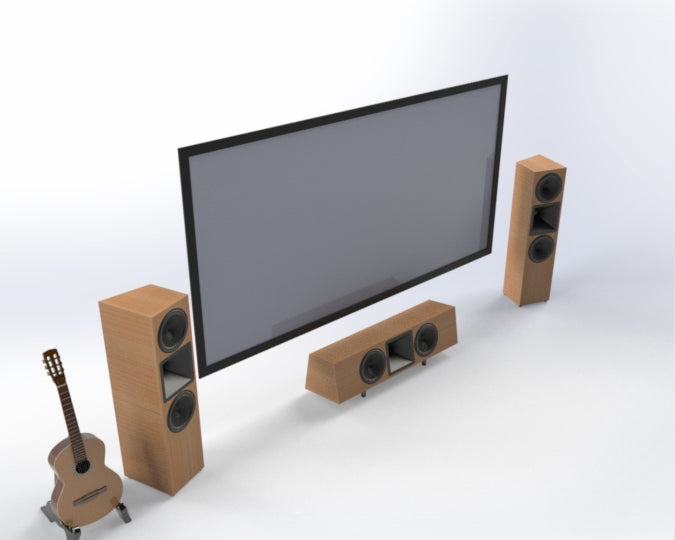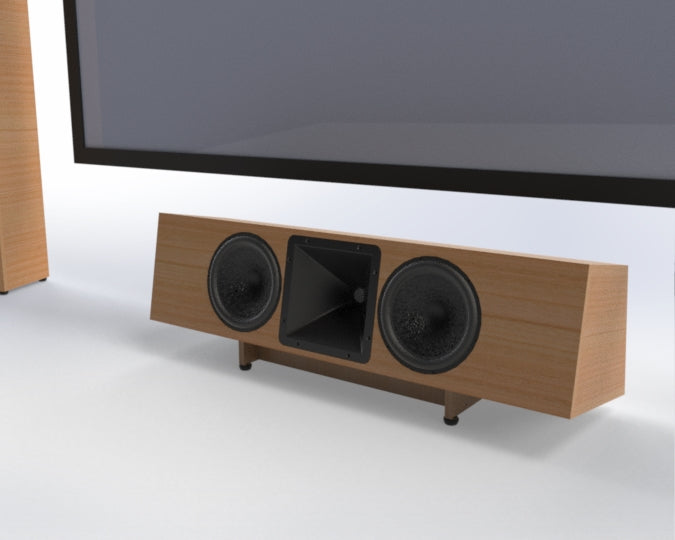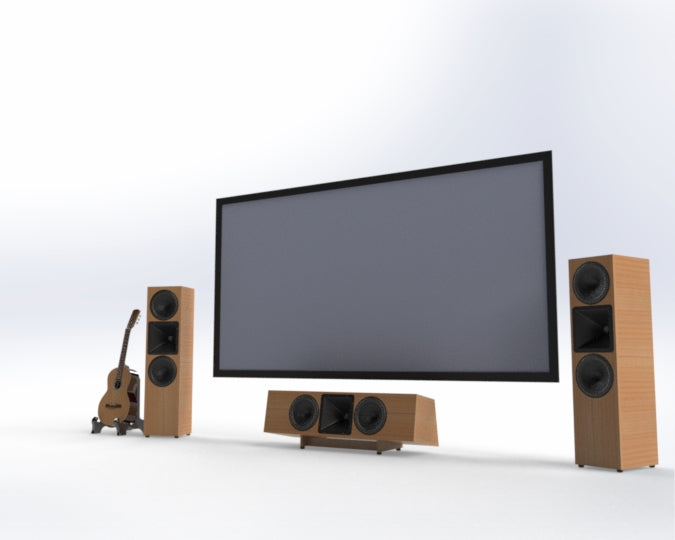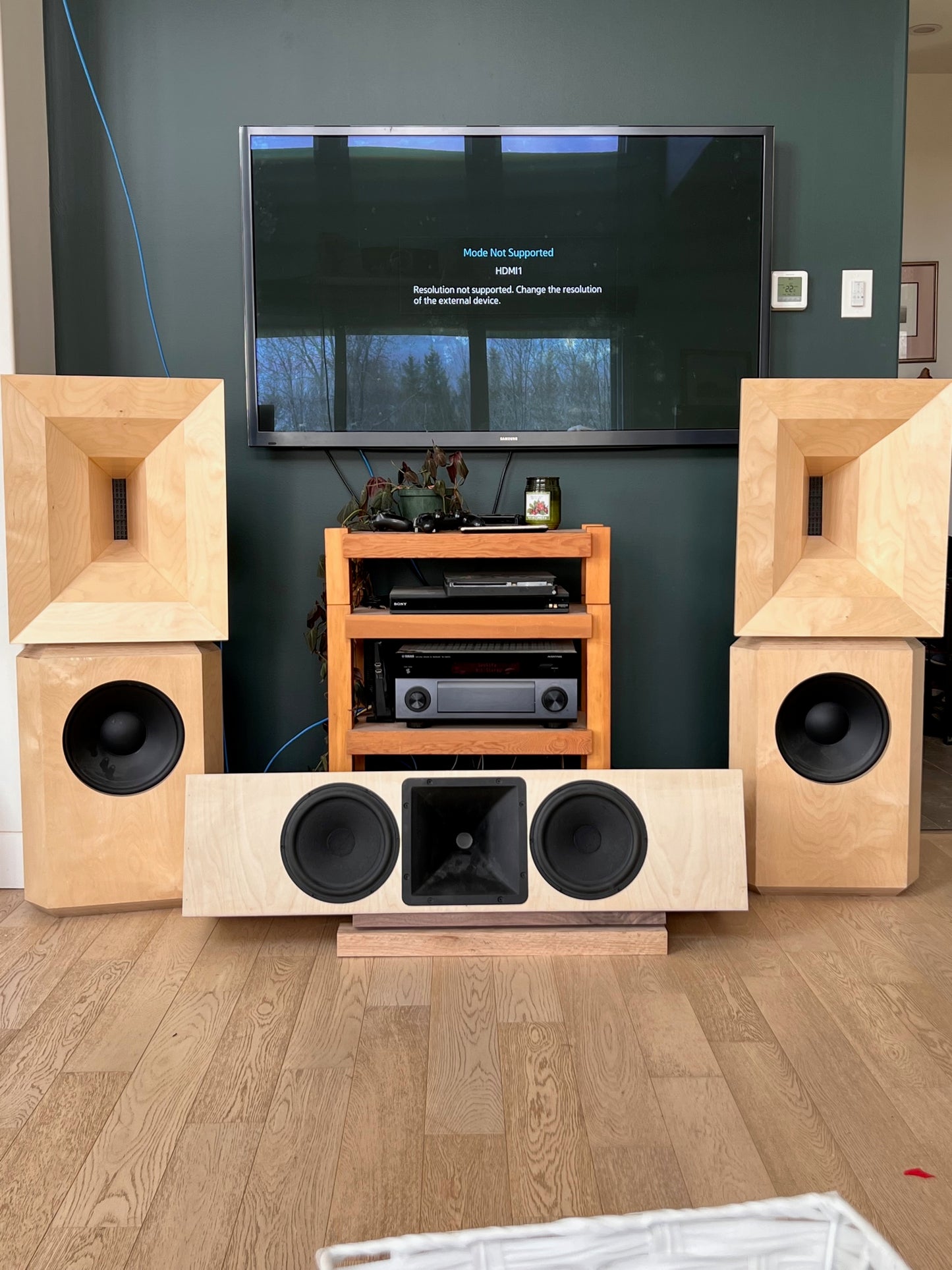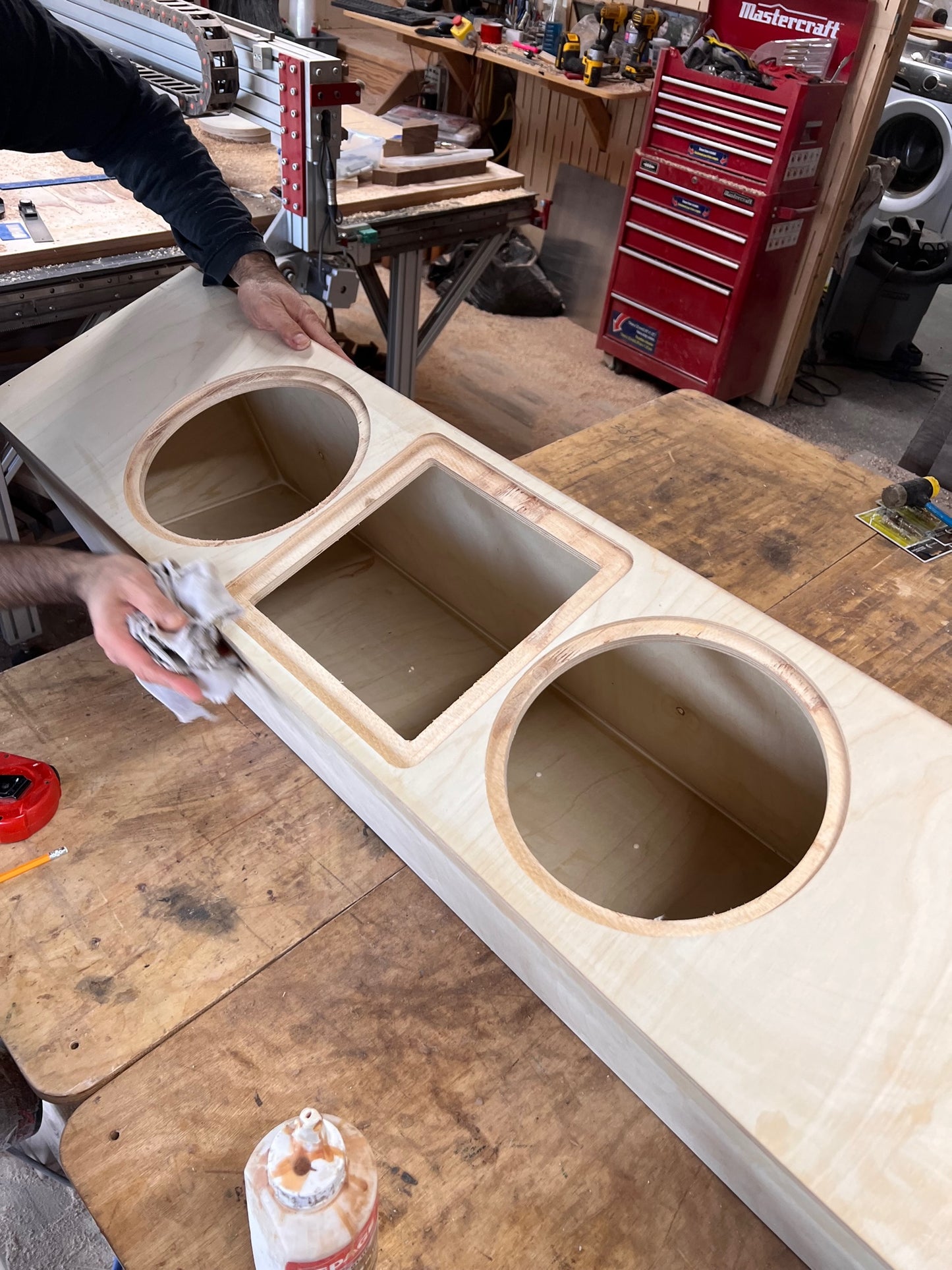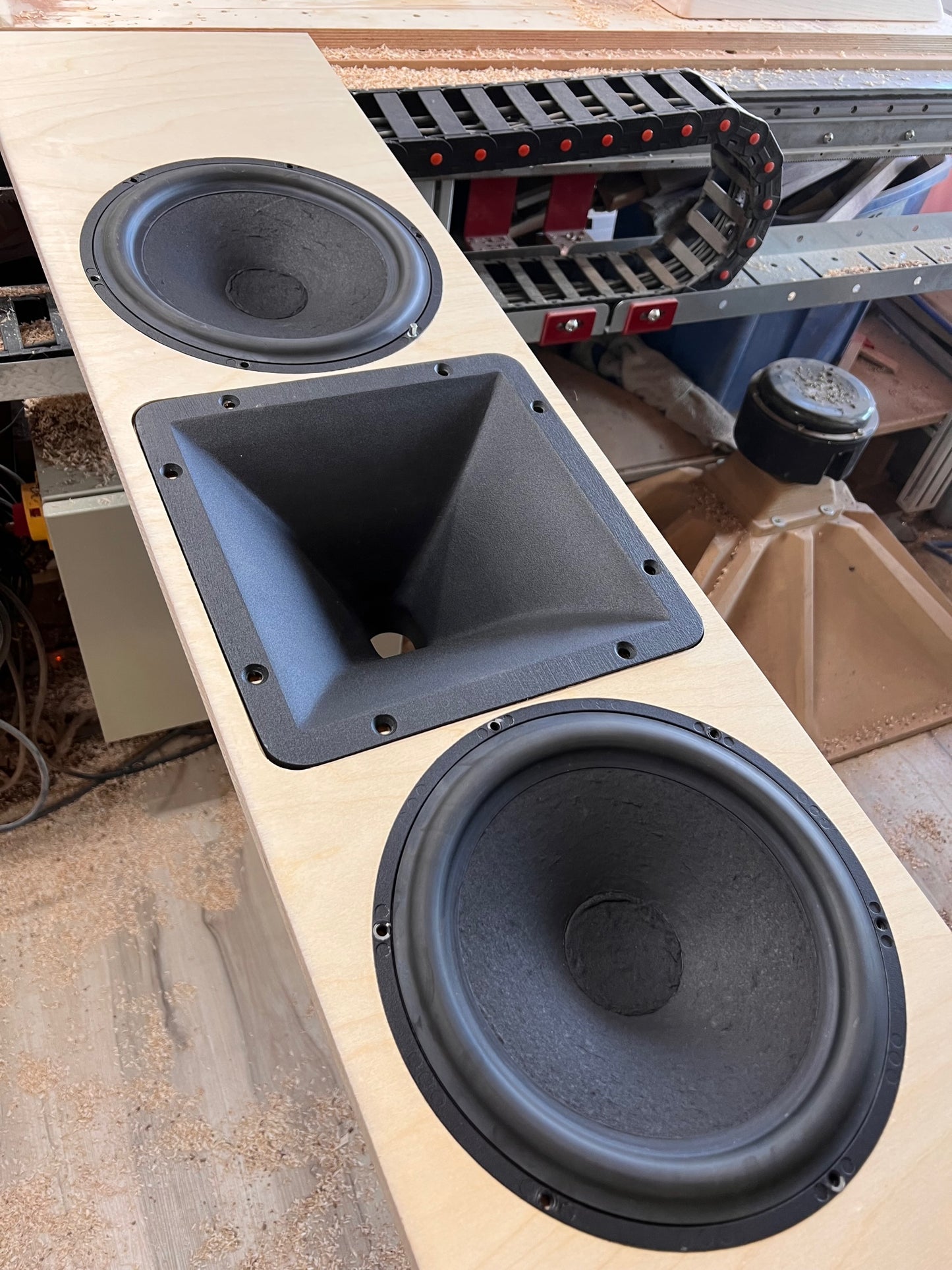Joseph Crowe
Speaker System No. 2015 --- 10" MTM with 1.4" Horn
Couldn't load pickup availability
By purchasing these plans you will automatically receive via email the required PDF assembly and detail drawings to construct these speakers. Also included is the passive crossover schematic with bill of materials and part numbers from Madisound. All components are from Madisound with the exception of the B&C ME90 cast aluminum horn. After extensive testing I've chosen this horn for it's low coloration and relatively shallow depth which provides physical time alignment with the 10" woofers.
Special Note: please contact us for a quote on ordering the drivers and crossover components. joseph_crowe@josephcrowe.com
Design Goals
Speaker System No.2015 is a medium size format MTM using dual 10" Scanspeak 25W/8565 woofers and matching B&C ME90 1.40" horn with the SB Audience 65CDN-T 2.50" voice coil compression driver. These drivers have been carefully selected by Joseph Crowe based on their specific parameters and sound quality. The goal with this system is to provide world class sound quality that is more "audiophile" than "pro sound". Joseph Crowe decided to move away from the typical Pro sound woofer and instead chose a driver from Scanspeak which features the renowned Symetrical Drive One motor technology for an extremely flat BL(x) curve which translates into much lower distortion at normal listening levels. The Scanspeak woofer also has the ideal set of parameters to allow for a sealed cabinet alignment providing a flat "in-room" response down to 25Hz. By allowing each speaker to reproduce bass frequencies we are able to achieve a flatter "in-room" frequency response by virtue of the multiple bass sources rather than simply having one or two subwoofers. The multiple bass source will typically average to a flatter in-room response especially with the MTM configuration which the typical floor bounce dip. Of course, adding subwoofers is still an option if you require higher SPL or bass lower than 25Hz.
The SB Audience 65CDN-T 1.40" throat compression driver uses a 2.50" titanium diaphragm. This driver has been chosen because of it's subjective sound quality, providing excellent soundstage depth and smooth sound character. This unique compression driver stand out from the rest in that it has no breakup modes until 14kHz. The use of copper shorting rings in the motor reduces flux modulation distortion for improved clarity.
The cabinet uses a 20 degree angled rear wall to minimize internal standing waves and to reduce the reflected back wall energy which can harm the woofer's frequency response.
The angled rear wall helps reduce floor space when toe-in is used for the left and right speakers. (see photos)
Construction
The cabinet is a basic construction made from 18mm thick europly (Baltic Birch Plywood). This specific wood was chose for it's sound character. We found that MDF cabinets seemed to damp out transient impact, so I've specified birch plywood to maintain good perception of dynamic range.
Includes
- PDF assembly & detail drawings
- Separate drawing packages for Left, center, right speaker assemblies
- Tilting stand drawing for center channel
- Passive crossover schematic (included in PDF drawings)
- Bill of material and part numbers for crossover components (all from Madisound)
- Nested layout on standard sheet of plywood
Why MTM?
I might get asked why I chose an MTM over a 3-way where the midrange and tweeter are arranged vertically for better horizontal off-axis coverage. The answer lies in the ME90 horn in that it provides pattern control right down to 1kHz. Typically you would see midrange drivers arranged horizontally below a HF horn which does the exact same thing, provide pattern control down to 1kHz. There is really no difference. By going with a single point source for 1kHz - 20kHz coverage then we get improved coherency through the critical vocal range without having to put a crossover point in the 4kHz region typical of a 3-way.
Measurements
Below is the frequency response for speaker system No.2016 showing great pattern control down to 800Hz and consistent well behaved off-axis character in relation to the on-axis. This indicates low edge diffraction and the absence of horn coloration. Shown is the response at 0,15,30 & 45 degrees off-axis.

